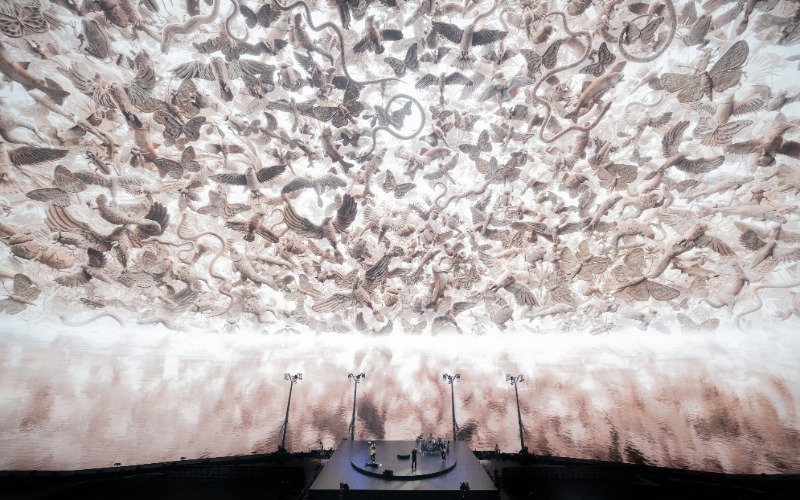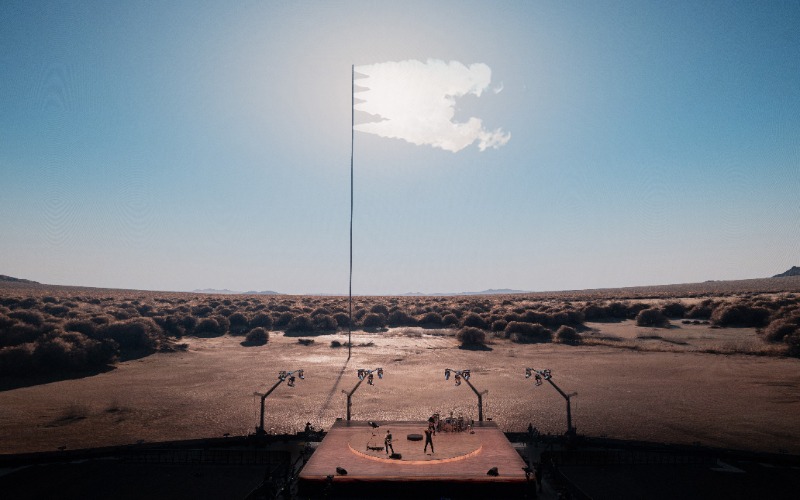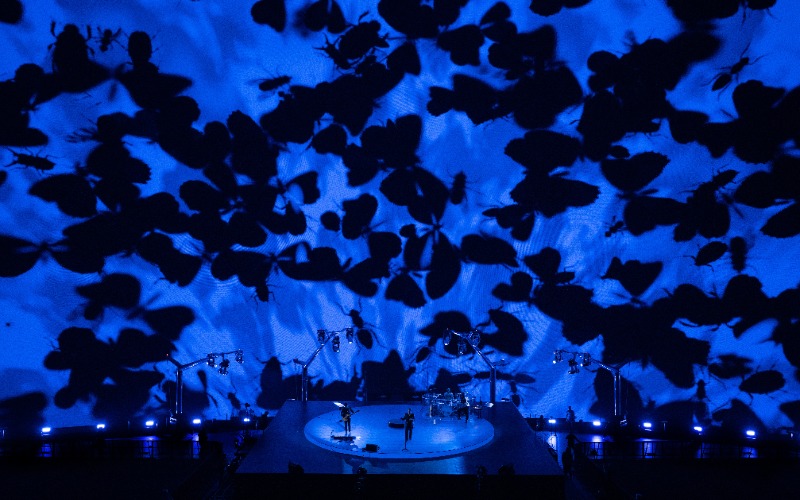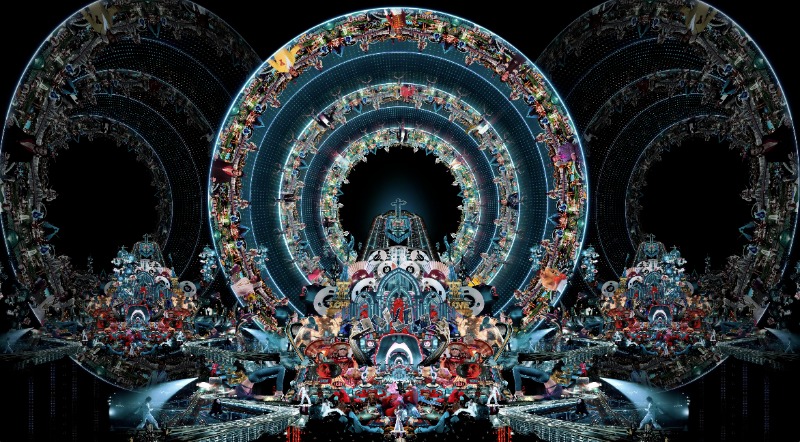U2 had many creative visionaries who helped make the Las Vegas Sphere’s art come to life. Their imagination, with the help of some impressive tech, made the shows an epic adventure for every audience member.

With over 40 years of live performance design experience with U2, Willie Williams is the creative director for this show series at the Sphere. Artists who contributed content for the shows include Brian Eno, Marco Brambilla, Es Devlin, John Gerrard, and Industrial Light & Magic. Each one brought something unique to the table. For example, Brian Eno created a generative algorithm that controls the stage’s color and some of the lighting. The tech makes it so that the show will have a unique color palette. Marco Brambilla’s video sequence, Even Better Than the Real Thing, features AI-generated Elvises.
Williams and these other talented artists designed the show’s visuals with virtual reality beforehand because the Sphere was under construction during the design process. The team had to collaborate like never before, utilizing new tech to create extraordinary visuals for the Sphere’s debut.
I&T Today interviewed Willie Williams about his experience as the creative director to learn more about the design process for U2’s shows at the Sphere.
Innovation & Tech Today: How was the collaborative process with the artists in creating material for the show?
Willie Williams: We worked with a wide range of artists, some long-standing collaborators, and some new to the U2 fold. Each had quite a different experience. Embracing the collaborative process was harder for some artists than for others, but ultimately everyone understood that the show is the boss. Even for me, the ideas and designs are ultimately judged by the show itself; the elements that work get to stay, the ones that don’t get dropped.
I&T Today: Can you discuss the challenges of designing a show within a never-before-done venue, especially since it was under construction during the design process?

Williams: With this project, not only did we have to imagine an entirely new kind of show, but we also had to imagine the venue it would be performed in. Making a show like this is always the confluence of art, science, and diplomacy, but this ranked much higher on the diplomacy scale as so much was not under our control.
I&T Today: How was virtual reality used to design the show?
Williams: VR proved very useful in designing the show as it was often the only option available to view what we were making. The resolution is still very low, but it was frequently helpful in deciding how big something needed to be or how fast something should move. It was also great to be able to view elements from all over the building without tramping up and down stairs.
I&T Today: What are your hopes for the future of immersive fan experiences like this? How does tech play a part in this?
Williams: One of my favorite reviewer comments of the U2 Sphere show was along the lines of “the future of live concerts is very, very weird, but it’s also very, very live.” We are currently inundated with “immersive” experiences, which are often not very immersive and frequently not very engaging. I have always been drawn to designing for the live experience and view all of these visual elements simply as tools to enhance that.
I&T Today: Are there any special visual or audio effects that were made for the Sphere’s 4D technology and immersive sound system?

Williams: From our side, the principal element of custom technical design for the visual aspect of the show was the video playback system. Treatment Studio, in tandem with Fuse, designed a bespoke system to harness together 23 of the Disguise “d3” playback systems commonly used in concert touring. This allowed us the programming flexibility we needed, along with the kind of media and camera integration required for this kind of show.
I&T Today: How did the creative team work together to have the visuals and music work together well?
Williams: One of the keys to the success of the show was the band’s understanding that we were creating an ocean liner rather than a small dinghy. They were aware that large last-minute changes of direction would be out of the question and stayed engaged with me throughout the whole design process. I realize this sounds like it should be the norm, but it is very unusual in concert touring! Just rendering some of the larger video sequences took several days, so the creative process for each piece often required several months. Having the performers, and therefore the music, be such an integral part of the journey allowed us to aim much higher than we might otherwise have done.










